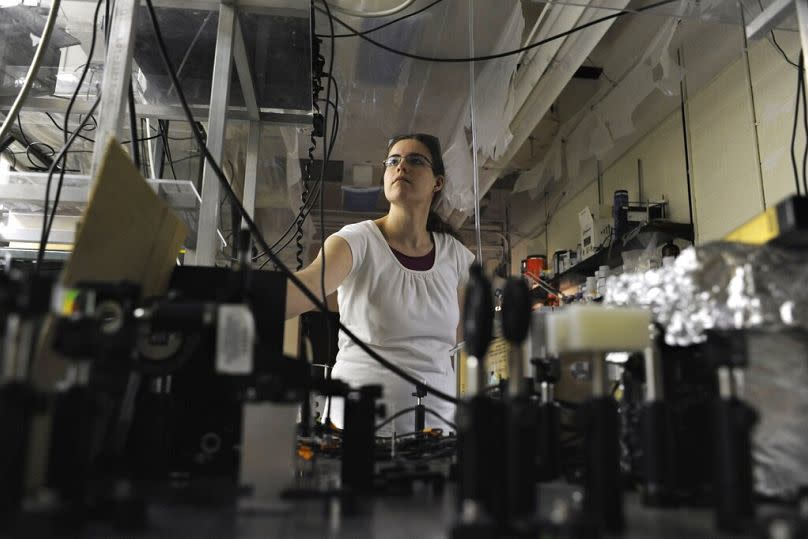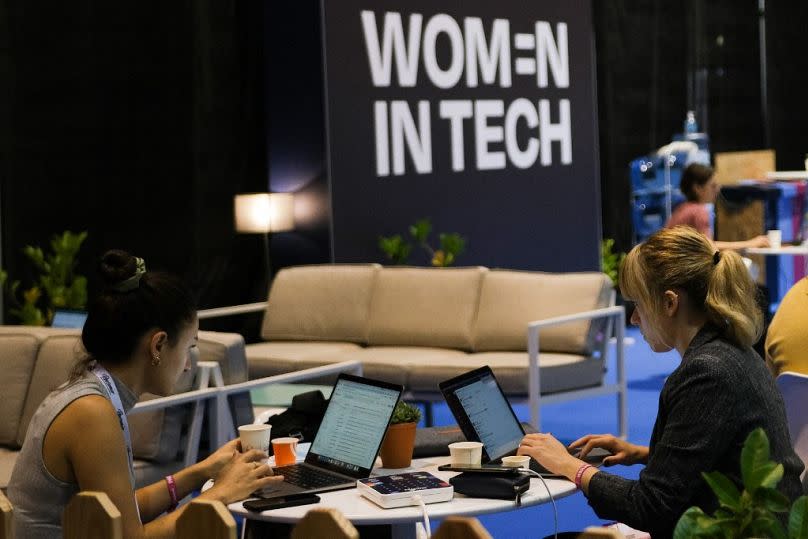With time, more women have come to be leaders in science and engineering

My strongest memory of science, and the joy of science, is from secondary school.
The lessons I had with my chemistry teacher were like magic: he was playing with formulae and numbers, and I loved it.
Chemistry captured my imagination. For the first time, I was in awe of science as a subject; it was an area I knew I wanted to pursue because of the joy it brought me.
Equally important to me is that sciences are useful to the world, for humanity.
Applying science to challenges creates solutions: from climate crises to biodiversity decline to developing new clean energy, science has the answers.
The absence of women role models was always apparent
I have worked all my life on projects aimed at decreasing the environmental impact of industrial activities needed for the development of society.
This has ranged from preserving the quality of groundwater to the responsible management of waste generated by these activities, including nuclear electricity generation.
This sense of joy and purpose has driven my work through what has always been a traditionally male-dominated industry.

Much like my experience at school, during my early career, I found men to be key mentors.
They were present, and they believed in me, my work and my ability to achieve my own ambitions.
While I was able to receive support that defined my future from men, the dominance of male figures in my early career reflects a greater challenge the industry has always faced: an absence of women leaders and role models.
Women face disproportionate barriers, indeed
Like many, in these early days of my career, I found that the barriers experienced by women across the industry were less visible.
When we start out, we can dedicate so much to our own professional development – we are less likely to have other responsibilities to take on outside of work.
In time, it became increasingly apparent that the barriers faced by women are disproportionate to those faced by men.

The unwritten roles of society mean that women take a greater share of family care.
Looking after children and a home entails dedicated time and effort, and it is difficult to combine these responsibilities with long professional hours.
It is here, as careers begin to grow, that women often feel the need to take a step back – one reason we have seen a lower number of women in senior positions compared to junior roles.
According to the Gender Equality Index, women are still 40% more likely to take care of children and/or the household than men, although these numbers are evolving year after year.
What is affinity bias, and how does it work?
These subconscious biases extended much further. Affinity bias, for example, is an unconscious bias that encourages us to gravitate towards, and empathise with, those who are like us.
In an industry as dominated by men as science and engineering is, this bias often means that women are under-represented, especially in the more senior positions: a hindrance to progression.
As an example, according to the European Institute for Gender Equality, 71% of board members in large companies are men versus 29% of women. Is this not an example of affinity bias?

In my own experience on committees and panels, when there are few women present, it is much harder to be heard in these settings.
This never meant that my or my peers’ ideas were less important or less worthy. What it did mean was that we had to shout a little louder to be heard, which many perceive to be loud or bossy.
The messages we’ve grown up with foster this apparent disadvantage and carve out our personalities from a young age.
Messages such as “be nice”, “be inclusive”, and “promote teamwork” are especially common for girls, while boys more typically receive messages such as “be the best”, “win”, and “speak up”.
Now, however, things are changing – little by little.
The glass ceiling is slowly cracking
Today, as I sit on these same committee panels, there are more of my female peers with me.
We are vocal, proactive, and ambitious.
With time, more and more women have come to be leaders in their respective fields, joining committees to advise policymakers and institutions on the best approaches to our biggest challenges.
As more women have entered these spaces, biases that had always stood were beginning to break. With that break came opportunity.

There came a point when I realised that the absence of female role models was not because women were not working – and leading – in the industry but because they were less visible.
Women have always been leading in sciences. We are fortunate in our industry to see so many pioneering women who have broken down barriers and opened up opportunities that once previously didn’t exist.
Seeing women occupy these spaces – on committees, in senior positions at large companies, or leading research at universities and research institutes – is breaking the glass ceiling in terms of potential but also perception.
There is so much we can learn from our junior and senior peers who are becoming visible and recognised for their work.
There's more work to be done
Having someone to emulate has an impact on how we perceive ourselves and our ability to achieve.
Seeing women lead instils confidence in us that we can lead and we can achieve.
There are now more women in positions of influence across every scientific and engineering discipline than ever before – from chemistry and astronautics, or genetics, to IT.

Unlike when I was at school and university and became enthralled by the magic of chemistry, young girls now will see women as magicians, someone like them.
It is my hope that I can help those who follow behind me in the way that those who went before have supported me.
That I can offer help in this way keeps me motivated to continue with my work; it drives me to push forward.
While significant change has been seen in our industry over the years, we must all continue working towards greater equality.
Dr Lara Duro is the Chief Executive Officer of Amphos 21, a specialist consultancy operating across the environmental, water, and energy sectors in Spain, Chile, and Peru.
At Euronews, we believe all views matter. Contact us at view@euronews.com to send pitches or submissions and be part of the conversation.

 Yahoo Sport
Yahoo Sport 





































